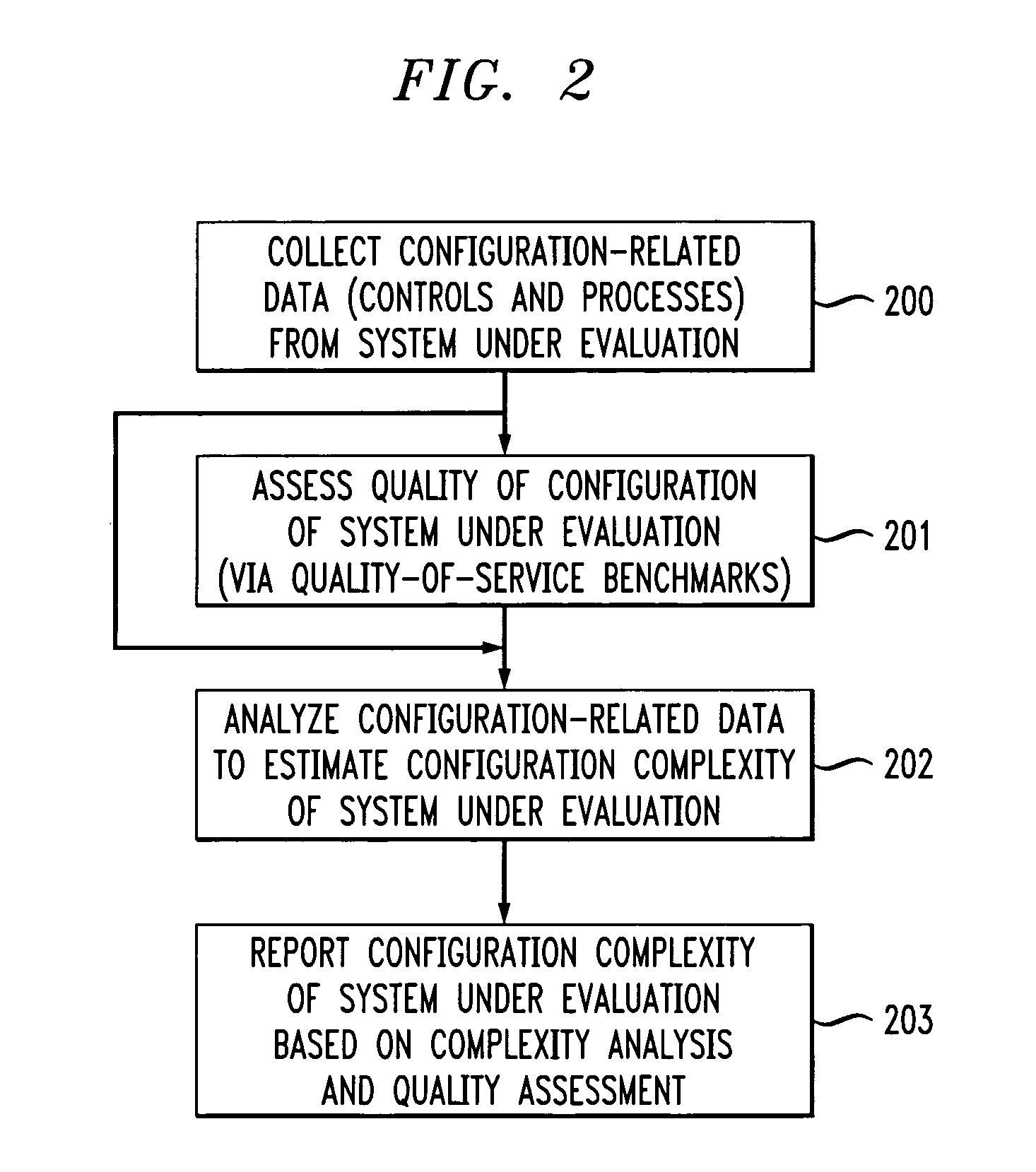System and methods for quantitatively evaluating complexity of computing system configuration
a computing system and complexity technology, applied in the field of computing systems, can solve the problems of increasing the total cost of ownership increasing the complexity of the computing system, and the complexity of the configuration, so as to minimize the configuration cost, optimize the financial cost of providing, and minimize the configuration complexity
- Summary
- Abstract
- Description
- Claims
- Application Information
AI Technical Summary
Benefits of technology
Problems solved by technology
Method used
Image
Examples
Embodiment Construction
[0028]As will be illustratively described below, principles of the present invention provide techniques for quantitatively evaluating the complexity of configuring computing systems such as centralized, distributed, and embedded computing systems. By way of example, configuring a computing system may encompass any process via which any of the system's structure, component inventory, topology, or operational parameters are persistently modified by a human operator or system administrator. Examples include, but are not limited to, installing, provisioning, upgrading, or decommissioning software or hardware; adjusting settings on two or more systems so that they are able to communicate with each other; adjusting system parameters to alter system performance or availability; and repairing damage to a system's state resulting from a security incident or component failure.
[0029]Configuration complexity refers to the degree of simplicity or difficulty perceived by human operators, system a...
PUM
 Login to View More
Login to View More Abstract
Description
Claims
Application Information
 Login to View More
Login to View More - R&D
- Intellectual Property
- Life Sciences
- Materials
- Tech Scout
- Unparalleled Data Quality
- Higher Quality Content
- 60% Fewer Hallucinations
Browse by: Latest US Patents, China's latest patents, Technical Efficacy Thesaurus, Application Domain, Technology Topic, Popular Technical Reports.
© 2025 PatSnap. All rights reserved.Legal|Privacy policy|Modern Slavery Act Transparency Statement|Sitemap|About US| Contact US: help@patsnap.com



